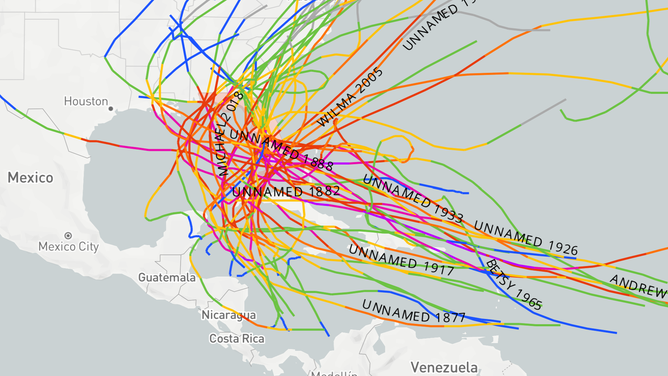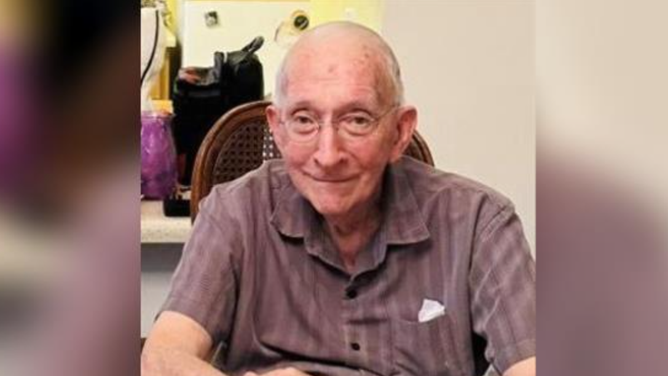What is the Hebert Box and what does it mean for hurricane strikes?
Hurricanes such has Ivan, Wilma, Irma and Ian all passed through a Hebert Box. Cyclones such as Maria and Gilbert passed through the boxes but ended up missing the Sunshine State.
What is the Hebert Box?
There are two regions of the Atlantic Basin that are considered to be part of a Hebert Box – one in the southwestern Atlantic and northeastern Caribbean and the other in the western Caribbean. Paul Hebert, an expert hurricane forecaster, said if a significant hurricane passed through either of these two 335-mile-by-335-mile regions, the chances for a Florida strike would increase exponentially.
If you’re a weather enthusiast and closely monitor tropical systems, you may already be familiar with terms like the ITCZ, CDO, and even a TUTT. But did you know there’s a prognostic tool that can signal a significant hurricane threat headed towards Florida?
The tool is called the Hebert Box, and there are two of them in the Atlantic basin.
Hurricane expert Paul Hebert, who worked for decades at the National Hurricane Center, was the brains behind the rather low-tech methods.
According to Hebert, if a significant hurricane passes through either of the two 335-mile-by-335-mile boxes, Florida could be in store for increased chances of a direct strike later down the line.
One box sits east of Puerto Rico, encompassing parts of the northern Lesser Antilles, while the other is located in the western Caribbean, south of Cuba and the Cayman Islands.
Since their introduction in the 1970s, numerous hurricanes, including Ivan (2004), Wilma (2005), Irma (2017) and Ian (2022), have traversed through these imaginary boxes.

Location of Hebert boxes.
(FOX Weather)
7 FACTS TO KNOW ABOUT HURRICANES
The underlying theory behind these boxes is that if a large and dangerous hurricane passes through, external influences such as troughs and steering winds may have limited time to alter its trajectory.
Hurricane experts compare large cyclones to cruise ships, which take a long time to turn, versus weaker systems, which resemble smaller vessels and can turn more quickly.
The boxes are not foolproof, as dozens of major hurricanes have passed through without striking South Florida.
Historic cyclones such as Maria (2017) and Gilbert (1988) passed directly through the boxes and never ended up impacting the Sunshine State.
The Hebert boxes do not take into account where a cyclone forms and just strictly relies on a system's strength on the Saffir-Simpson Hurricane Wind Scale.
Three infamous strikes on the Florida coastline that did not pass through the boxes are Hurricane Andrew (1992), the Labor Day Hurricane (1935) and Hurricane Michael (2018).
Despite Hebert’s extensive hurricane research, the boxes never became an official product of the NHC but do serve as an occasional aid when trying to forecast a cyclone’s path without the assistance of hurricane models and other high-tech methods.

Major hurricane strikes in Florida.
(NOAA Historical Hurricane Tracks)
Creator of Hebert Box passed away before 2024 hurricane season
Hebert passed away in May at the age of 91 after a stellar career in meteorology and hurricane forecasting.
He served as deputy director of the NHC and worked alongside legendary figures such as Dr. Neil Frank and John Hope.
During his over 3-decade-long career at the center, he tracked infamous storms such as Hurricane Hugo in 1989 and Hurricane Andrew in 1992.
Following his retirement in 1998, Hebert continued to contribute to the weather community as a consultant in the private industry.

Paul Joseph Hebert.
(Gentry Morrison Funeral Home)
